Leaders in the shipping industry concur: The maritime energy transition is on the way, and retrofitting engines for greener fuels is very much part of their strategy.
To get prepared for a decarbonized future, retrofitting existing vessels for dual-fuel use is a feasible option for the cargo ship industry as well as cruise ships and ferries equally. And it’s a good business case, too.
By Moritz Gathmann
The goal is clear: Until 2050 the maritime industry must become climate-neutral − that’s the target that the International Maritime Organization (IMO) has set in its strategy adopted in 2023. But what’s the road towards that goal, what measures have to be taken by the ship owners, and what will be the best climate-neutral fuel of the future? Over the last years, some things have become clearer. One of them: Retrofitting existing vessels with dual-fuel engines is a most viable option.
Hapag-Lloyd, one of the world’s leading container shipping companies, is among the big players leading the way. “We have partnered up with MAN Energy Solutions to retrofit 5 vessels. It is part of our strategy to become a zero emission company by 2045,” says Silke Lehmköster, Managing Director Fleet at Hapag-Lloyd AG. The retrofit will take place in 2026 and 2027, and it will enable the engines of the vessels to use methanol in a dual-fuel engine.
A multi-pronged strategy
Retrofits are only part of Hapag-Lloyd’s strategy to reduce emissions. Slow steaming, a practice that involves voluntarily reducing a ship's speed to save fuel and reduce emissions, is another. “Two decades ago, when I started sailing the seas, ships were going at 25 knots, now they are at 17”, says Lehmköster, herself an experienced captain of huge cargo vessels. The company also launched an optimization program that includes equipping the ships with more efficient propellers or a drag-reducing underwater coating. Moreover, LNG-powered dual-fuel vessels are also part of Hapag-Lloyd’s strategy: 7 out of 12 new-built container ships with LNG-fired engines are already in operation, the other five will follow in 2025.
It is part of our strategy to become a zero emission company by 2045.
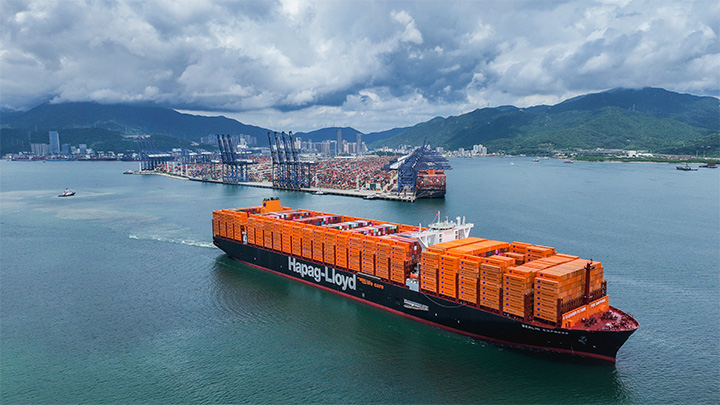
The benefits of retrofits for methanol, though, are obvious for Lehmköster: “We are reducing the fuel consumption, costs and eventually also our carbon emissions.” Moreover, a retrofit is a relatively easy process. The ship doesn’t have to be cut open, and the time in the drydocks is reasonable. “Depending on the complexity of the project and the adaptions required for the rest of the ship, a dual-fuel retrofit for a two-stroke ship takes between 50 and 80 days,” says Klaus Rasmussen, Project Sales Director at MAN PrimeServ Copenhagen.
That’s an important factor in an industry where time is money: “Our business is to transport cargo. So we are trying to match retrofits with in-water surveys or in dry-docking. But once we get into the dry-dock, it must be all set up,” says Lehmköster.
Methanol as fuel of the future
Most leaders in the industry are convinced that methanol will be one of the fuels of the future. “In ten years we’ll see a mix of LNG and methanol in the container shipping business”, says Lehmköster. And it’s definitely the best solution when it comes to retrofitting. “It’s much more difficult to retrofit a ship to LNG or ammonia.”
And the retrofit business is gaining traction. “MAN Energy Solutions has around 22.000 two-stroke engines operating on vessels around the world, out of which around 4600 can be converted to using a different fuel”, says Rasmussen. The company has done 23 two-stroke conversions, with 38 more “in the pipeline”, as Rasmussen puts it.
MAN Energy Solutions’ Bernd Siebert explains why the retrofitting is crucial to become climate-neutral. “We have retrofit packages for all engines that can reduce CO2 emissions by 50 percent or more”, says Bernd Siebert, Head of Retrofit & Upgrades at MAN PrimeServ Germany. “But the main contribution is the conversion to dual-fuel-engines.” The company offers that for two-stroke engines, four-stroke engines, with LNG and synthetic methane are also part of the portfolio. “And currently we are testing a four-stroke engine retrofit for methanol on our testbench in Augsburg, which will be mainly suitable for cruise ships and ferries.”
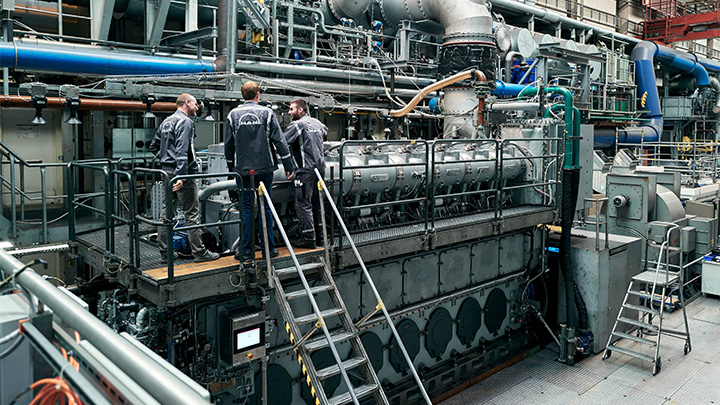
Complex challenges for cruise ships
The challenges for the latest generation of cruise ships are bigger, explains Henning Jongebloed, who is Head of Sales at MEYER RE, which provides after sales support and modernization efforts for cruise ships throughout their entire service life. For cruise operators, retrofits to change the main fuel are rather new business, having being discussed only in most recent years. “Basically, cruise ships are like small cities, with a lot of subsystems. So retrofitting a cruise ship needs a holistic approach: It’s not enough to only change the engine or the fuel.”
Jongebloed has seen a rising demand for state-of-the-art cruise ships over the last years. These vessels demand a high level of engineering knowledge to integrate the systems. “That’s why it’s so important to team up with partners when it comes to retrofits. Everyone has their special areas of knowledge. It won’t work if you change one item here or there. The whole system has to function hand in hand – including the energy production,” he says.
“Collaboration is key, as we’re doing it with Hapag-Lloyd and Meyer already,” adds Bernd Siebert. “There are so many pieces of the puzzle to get the final project done. Together, there can be lessons learned, and we can succeed.” Jongebloed agrees: Just recently his company was invited to Augsburg to see the testing of the four-stroke methanol engine. “We understood that it’s something that’s already working, and does not need to be tested for decades,” says Jongebloed.
Retrofitting a cruise ship needs a holistic approach.
Sustainable options for customers
Concerning economic feasibility, one has to look at the broader picture. “We are committed to our environmental goals, and that comes with a price tag,” says Lehmköster. At first glance, retrofitting is producing costs. But Lehmköster has seen a turnaround in society in general that encourages her to pursue the decarbonization path.
“We offer a ’ship green’ service. In the booking process, a customer can easily pay an extra fee which ensures that the product is transported using common biofuels, ranging from 25 to 100 percent. So we get a payback, and in this sense our customers are participating in our retrofit efforts.”
A problem that has yet to be solved is the availability of green methanol – because only the use of a fuel that has been produced in a climate-neutral way will eventually reduce the emissions of the maritime industry. “Over the last years, we’ve seen ‘gas stations’ for biofuels like LNG appearing not only in Europe, but also in Asia”, says Hapag-Lloyd’s Lehmköster. “I’m optimistic, that we’ll see the same for methanol.”
But securing the supply of green methanol is not in the hand of the shipping companies: It depends on regulation by states and international organizations, making the use of fossil fuels more expensive - and the use of carbon-neutral fuels more rewarding. “At the moment it’s mainly grey methanol that’s available”, says MAN’s Siebert. “We need to incentivize the use of climate-neutral alternatives now to encourage both investors and producers to build up a worldwide infrastructure.”
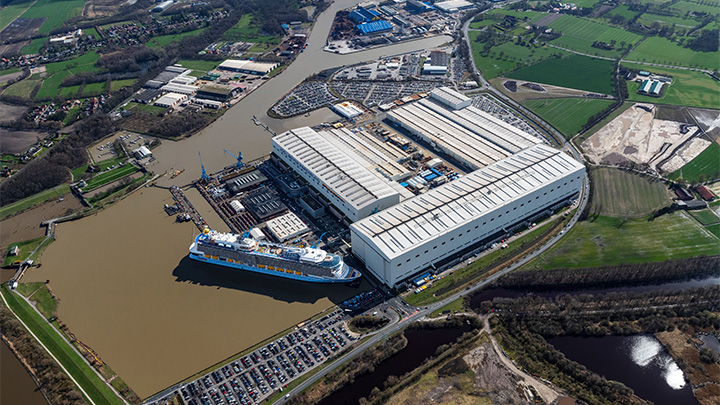
About the author
Berlin-based journalist Moritz Gathmann has been reporting as a correspondent from various regions of Europe for German publications since 2004. His work has been published in DER SPIEGEL magazine, Frankfurter Allgemeine Zeitung, and other media.
Explore more topics
-
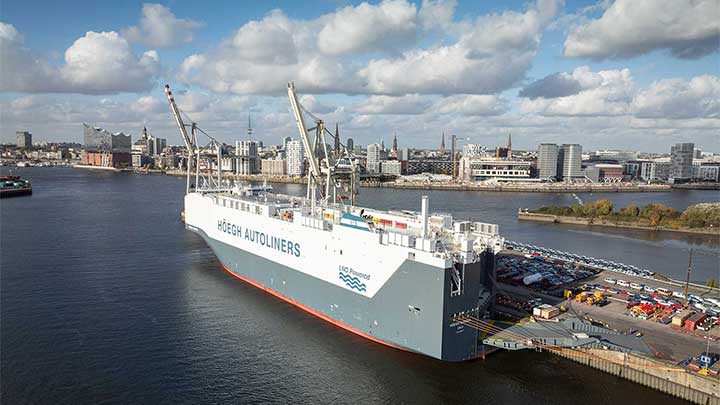
Hoegh - LNG-powered car carrier
With its first LNG-powered car carrier, Höegh Autoliners is taking a big step towards its target of net-zero by 2040. The centerpiece of the vessel is a MAN Energy Solutions MAN B&W ME-GI dual-fuel engine.
-

Maersk Halifax Retrofit
The world’s first methanol retrofit of the Very Large Container Vessel Maersk Halifax opens the doors for green fuels.
-
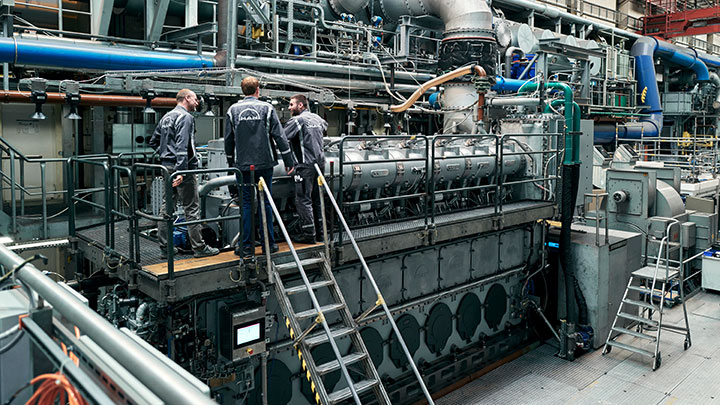
Methanol dual fuel retrofit
Engineers are now testing a retrofit for four-stroke ship engines that will enable ferry and cruise ship operators to meet the growing requirements on emission reduction with green methanol.
